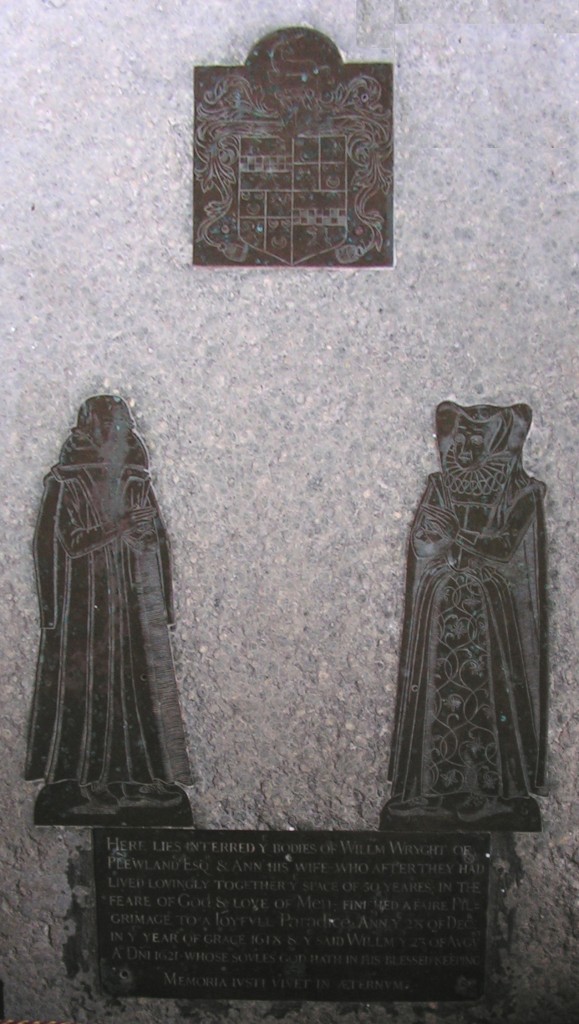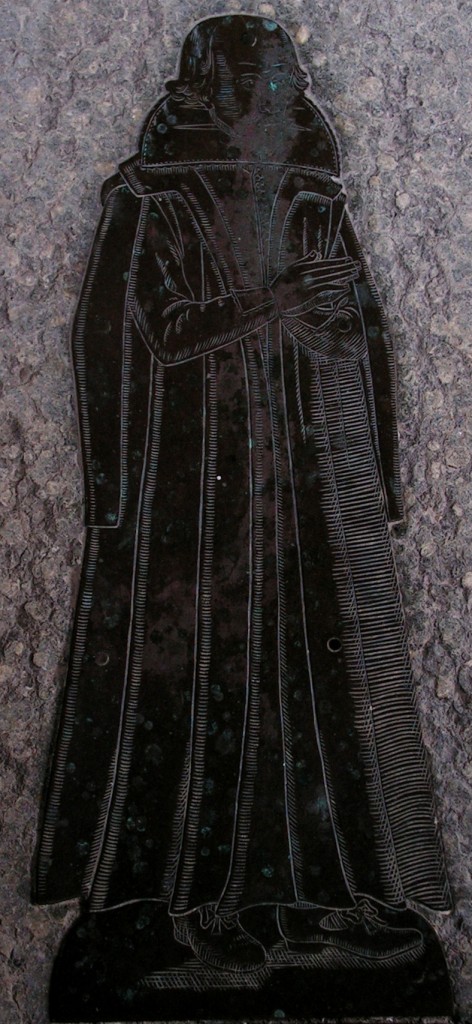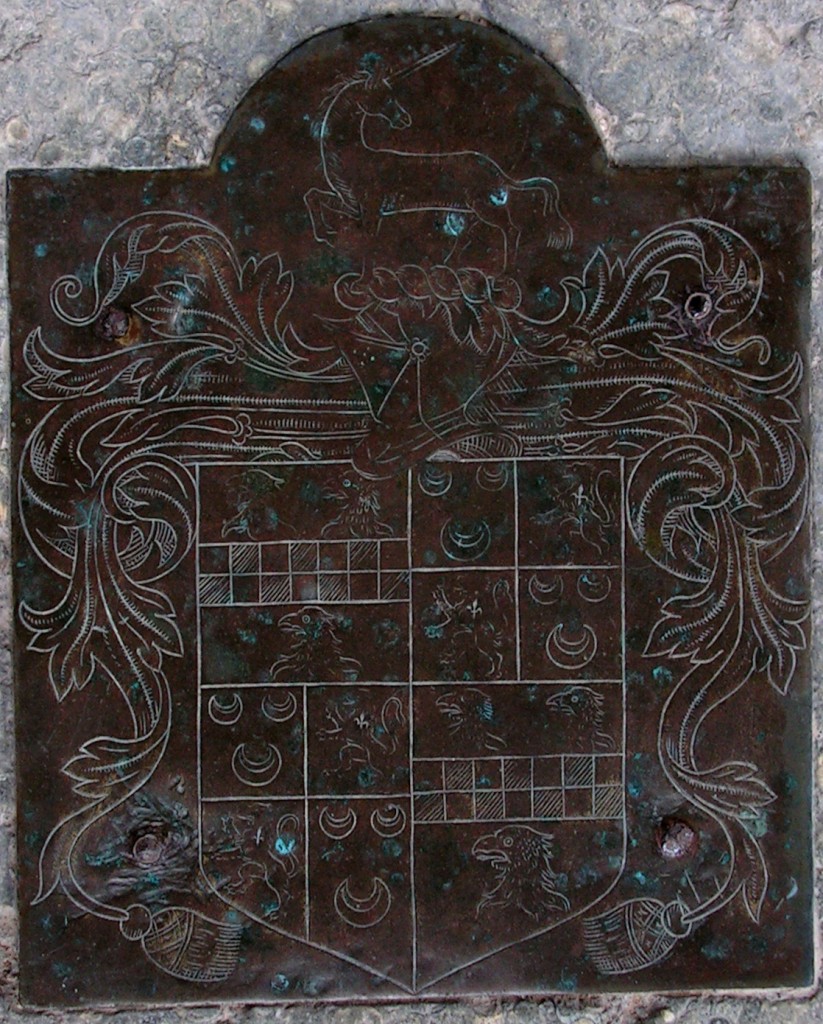William & Ann Wright
- Date of Brass:
- 1621
- Place:
- Welwick
- County:
- Yorkshire
- Country:
- Number:
- I
- Style:
- Francis Grigs
Description
February 2025
The sculptor Francis Grigs is perhaps best known for his signed 1638 sculpted monument in the church at Framlingham, Suffolk, commemorating Sir Robert Hitcham, d.1636. This comprises a black marble slab on the shoulders of four figures (angels in this case). The precedents for this design go back to the 1520 monument of Count Engelbert of Nassau at Breda in the Netherlands. The same inspiration lies behind the monuments of Sir Francis Vere, d.1609, in Westminster Abbey, and Robert Cecil, earl of Salisbury, d.1612, at Hatfield, Hertfordshire.
For monumental brass enthusiasts, the brasses with his signature for Richard and Jane Cressett, 1640, formerly at Upton Cressett in Shropshire (now in the church at Monkhopton nearby), and John Morewood and his wife, 1647, at Bradfield in Yorkshire loom larger. These seem to take their inspiration from work of the mid to late 1610s, seemingly of his master and uncle Henry Grigs, one of the London marblers who joined the Masons' Company when they amalgamated with the Marblers in 1585. None of these earlier brasses is signed, but they in turn give every indication of being based on designs emanating from the Cure family.
Francis Grigs himself did not take up the freedom of the Masons' Company until 1619/20, presumably at the age of 21. His signed brasses all date from the 1640s, as do his other signed monuments other than that at Framlingham. However, from the early 1620s onward there are a considerable number of both rectangular brasses and incised black marble panels that seem to be his work. They usually take the form of one or more kneeling figures, often at a prayer desk on a tiled floor, sometimes with an architectural frame, with an inscription below.
Despite concentrating on producing these rectangular brasses, it seems that Grigs did occasionally make ones with separately-inlaid components. The brass at Welwick in Yorkshire is one example. It commemorates William Wryght of Plowland (here 'Plewland'), esq., and Ann Thornton his wife. She died on 28 December 1618 after a marriage lasting fifty years. William died on 23 August 1621. The inscription plate has an epitaph in English in Roman capitals apart from the words God and Paradice and concludes with a Latin phrase Memoria iusti vivet in Aeternum (The Memory of a Just Man will live for Ever). Unusually for Grigs’ work Ann Wright’s underskirt is patterned. William Wright’s stiff semi-circular collar is more typical.
The brass was perhaps laid locally after being sent as loose plates. The stone in which it is set has an uneven surface as opposed to the black Tournai marble that was the usual choice at this date.
The Wright family came to Welwick from Kent in the reign of Henry VIII. William Wryght had two notorious younger half-brothers, John and Christopher Wright, the sons of his father’s second marriage. They hoped to raise a rebellion in the Midlands had the Gunpowder Plot succeeded, but were killed a few days after their co-conspirator Guy Fawkes was arrested on 5 November 1605. Christopher Wright and Fawkes had attended school together in York. Martha, sister of Christopher and John, was married to another co-conspirator, Thomas Percy. There is a tradition that a barn on the Plowland estate was where the conspirators met.
A much earlier Tournai marble slab nearby has indents of two separately-laid heads and hands under a canopy that joins the marginal inscription.
Copyright: Jon Bayliss (text and photographs)
Reference: https://stevewright.nz/john_wright_plowland.php
- © Monumental Brass Society (MBS) 2025
- Registered Charity No. 214336





